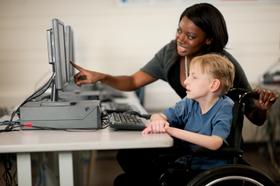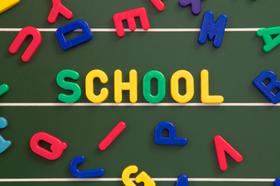Top Rankings
Bernalillo School District ranks among the top 20% of public school district in New Mexico for:
Category
Attribute
Diversity
Most diverse schools (Top 1%)
Community Size
Largest student body (number of students) (Top 1%)
For the 2025 school year, there are 4 public preschools serving 679 students in Bernalillo School District. This district's average pre testing ranking is 1/10, which is in the bottom 50% of public pre schools in New Mexico.
Public Preschools in Bernalillo School District have an average math proficiency score of 5% (versus the New Mexico public pre school average of 26%), and reading proficiency score of 10% (versus the 31% statewide average).
Minority enrollment is 98% of the student body (majority American Indian), which is more than the New Mexico public preschool average of 82% (majority Hispanic).
Overview
This School District
This State (NM)
# Schools
11 Schools
327 Schools
# Students
2,842 Students
99,710 Students
# Teachers
244 Teachers
7,694 Teachers
Student : Teacher Ratio
12:1
12:1
Student By Grade
District Rank
Bernalillo School District, which is ranked within the bottom 50% of all 140 school districts in New Mexico (based off of combined math and reading proficiency testing data) for the 2022-2023 school year.
The school district's graduation rate of 81% has increased from 55-59% over five school years.
Overall District Rank
#130 out of 141 school districts
(Bottom 50%)
(Bottom 50%)
Math Test Scores (% Proficient)
13%
24%
Reading/Language Arts Test Scores (% Proficient)
19%
34%
Science Test Scores (% Proficient)
16%
33%
Graduation Rate
(20-21)72%
66%
Students by Ethnicity:
Diversity Score
0.58
0.51
% American Indian
46%
10%
% Asian
n/a
1%
% Hispanic
46%
67%
% Black
n/a
2%
% White
4%
18%
% Hawaiian
n/a
n/a
% Two or more races
4%
2%
All Ethnic Groups
District Revenue and Spending
The revenue/student of $19,486 is higher than the state median of $14,756. The school district revenue/student has stayed relatively flat over four school years.
The school district's spending/student of $17,045 is higher than the state median of $14,121. The school district spending/student has stayed relatively flat over four school years.
Total Revenue
$55 MM
$4,694 MM
Spending
$48 MM
$4,492 MM
Revenue / Student
$19,486
$14,756
Spending / Student
$17,045
$14,121
Best Bernalillo School District Public Preschools (2025)
School
(Math and Reading Proficiency)
(Math and Reading Proficiency)
Location
Grades
Students
Rank: #11.
Santo Domingo Elementary School
(Math: ≤5% | Reading: 10-14%)
Rank:
Rank:
1/
Bottom 50%10
100 Hwy 22 West
Bernalillo, NM 87004
(505) 867-4441
Bernalillo, NM 87004
(505) 867-4441
Grades: PK-5
| 220 students
Rank: #22.
Algodones Elementary School
(Math: ≤5% | Reading: ≤10%)
Rank:
Rank:
1/
Bottom 50%10
1300 Hwy 313
Algodones, NM 87001
(505) 867-2803
Algodones, NM 87001
(505) 867-2803
Grades: PK-3
| 162 students
Rank: #33.
Cochiti Elementary School
(Math: ≤5% | Reading: 6-9%)
Rank:
Rank:
1/
Bottom 50%10
800 Quail Hill Trail
Pena Blanca, NM 87041
(505) 867-5547
Pena Blanca, NM 87041
(505) 867-5547
Grades: PK-5
| 169 students
Rank: n/an/a
301 Calle De Escuela
Bernalillo, NM 87004
(505) 404-5585
Bernalillo, NM 87004
(505) 404-5585
Grades: PK
| 128 students
Recent Articles

The 15 Biggest Failures of the American Public Education System
The world is in a constant state of change and those who fail to adjust fall behind. Unfortunately, the American public education system has not kept up with the times and is currently facing a number of serious problems. Keep reading to learn about the biggest failures affecting the modern U.S. public education system as well as some of the trends that could spark change.

Florida Governor Calls for More Funding for State鈥檚 Public School System
Florida Governor Rick Scott has introduced a state budget for next year that pumps one billion more dollars into the public school system. We鈥檒l look at his reasons for the increase and the responses to the proposal.

Can Your Child鈥檚 School Meet the National Standards?
The article discusses the challenges public schools face in meeting national educational standards. It examines current performance trends, identifies key issues affecting student achievement, and explores potential solutions for improving academic outcomes across U.S. public schools.




